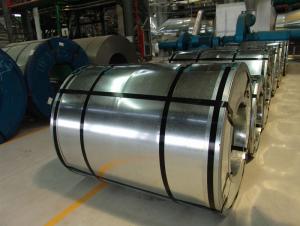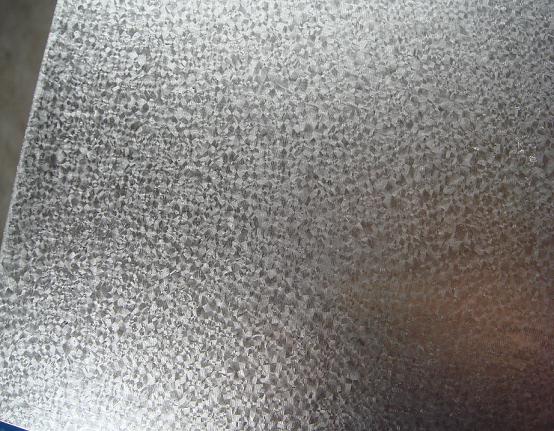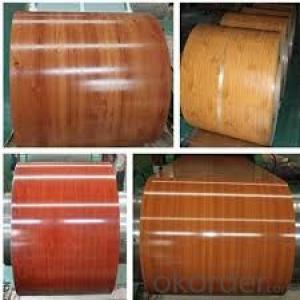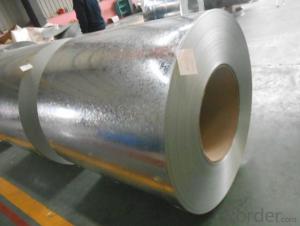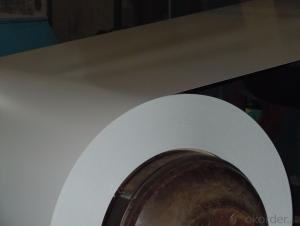High coating Galvalume Steel Coil
- Loading Port:
- China Main Port
- Payment Terms:
- TT OR LC
- Min Order Qty:
- -
- Supply Capability:
- -
OKorder Service Pledge
Quality Product, Order Online Tracking, Timely Delivery
OKorder Financial Service
Credit Rating, Credit Services, Credit Purchasing
You Might Also Like
GL, AZ70, Anti-Finger, small spangle, chromated & unoiled
SIZE (BMT) MOQ (MTS)
0.20 x 914mm x C 40
0.25 x 914mm x C 40
0.30 x 914mm x C 40
0.35 x 914mm x C 40
GL, AZ150, Anti-Finger
0.40 x 914mm x C 40
0.47 x 914mm x C 40
PAYMENT: T/T WITH 30% DOWNPAYMENT AND BALANCE AGAINST INVOICE & PACKING LISTSHIPMENT: 45 DAYS FOR CARGO READINESS AND 15 DAYS FOR CATCHING THE RIGHT VESSELOTHERS: ALL WORDS AND SENTENCES SHOULD BE IN ENGLISH
- Q: Ok I know this sounds stupid but is there anyway to make stainless steel look older? It looks too new and I don't want it like that. Thanks.
- Its called stainless for a reason :) many grades are out there, 300 400 series. You could use acid to make it look older but you wouldnt want to cook with it after chemically converting it with acid.Personally i like cast iron. It will last a life time + and looks very cool. Sorry no safe way to do it and cook with it. B^
- Q: Is Carbon Steel strong for swords?
- Yes. Most high quality knives are made of carbon steel versus say stainless steel. High strength carbon steel holds an edge well and is strong.
- Q: 420 440 1045 or 1065 ive bought knifes with these steel grades and i want to know which one is better.
- SAE 440 is the best. Classified as high grade cutlery steel. There are various grades of 440: A, B, C, and F. 440 A is the most stain resistant while 440 C has the most carbon and can achieve the highest hardness (Best edge Retention). SAE 440 Chemistry: 16 - 18% Chromium, 0.60 - 1.2% Carbon, 0.75% Molybdenum. SAE 420 is pretty good. Classified as cutlery steel, it is a stain resistant grade but has less chromium and significantly less carbon than SAE 440. SAE 420 Chemistry: 12 - 14% Chromium, 0.15% Carbon (min), 0 Molybdenum Chromium is what makes the steel corrosion resistant. It also adds toughness. Molybdenum adds extra corrosion resistance and adds hardenability. So you can see by chemical components that 440 is highest quality although that also means more cost. 1045 and 1065 are low quality steels and you should probably never use them for a knife. The 1 indicates plain carbon steel with little other alloying elements. The last two digits indicate how much carbon is in the steel. 1045 has 0.45% carbon, mid-range hardenability. 1065 has 0.65% carbon, high hardenability. So if I had to choose I would choose 1065 over 1045 but the difference isn't that noticeable. Everything I said here assumes they have all had the optimum Quench and Temper heat-treatment for their chemistry grade.
- Q: What are the quality standards for steel coil manufacturing?
- The quality standards for steel coil manufacturing typically include criteria such as dimensional accuracy, surface finish, mechanical properties, chemical composition, and adherence to industry-specific standards like ASTM or EN. These standards ensure that the steel coils meet the required specifications for various applications and provide reliable performance in terms of strength, durability, and consistency. Additionally, manufacturers often follow strict quality control processes throughout the production cycle to ensure the quality of the final product.
- Q: which metals have a higher density than steel? and how does the density compare to steel( example: tungsten carbide is 2x [i think] more dense than steel.)
- Look at a periodic table of the elements. The atomic weights are a guide to density. Tungsten is denser than tungsten carbide because it doesn't contain carbon. Also denser than steel are gold, lead, platinum, and a number of other metals. Steel is iron combined with lighter elements, so iron is denser than steel.
- Q: What are the different methods of painting steel coils?
- Painting steel coils can be achieved using various methods, each with unique benefits and practical applications. 1. Coil coating, an automated and continuous process, unwinds, cleans, pretreats, primes, paints, and cures the steel coils before rewinding them. This method guarantees precise paint application control and ensures a consistent finish. It is widely employed in high-volume production for industries like automotive and construction. 2. Spray painting, a versatile and flexible method, involves manually or mechanically spraying paint onto the steel coils. It allows for customization and precise control over the paint application. Depending on the desired finish and project requirements, spray painting can be done using techniques like airless spraying or electrostatic spraying. 3. Dip coating, also known as immersion coating, immerses the steel coils into a paint tank, ensuring complete coverage of all surfaces. This method is suitable for large or bulky steel coils that are not easily spray painted. Dip coating provides excellent coverage and is commonly used in applications like the electrical or appliance industry. 4. Powder coating, an electrostatic process, applies dry powder paint to the steel coils. Charged powder particles adhere to the grounded coils, creating a durable and even coating. This method offers superior resistance to impact, chemicals, and UV rays. It is frequently utilized in industries requiring high-quality and long-lasting finishes, such as aerospace or outdoor equipment. 5. Roll coating passes the steel coils through a series of rollers partially submerged in paint. As the coils move through the rollers, the paint is transferred to their surface. Roll coating is preferred for thin or delicate steel coils, as it provides a gentle and uniform paint application. It is commonly used in the appliance or electronics industry. Each method has its advantages and is selected based on factors like desired finish, production volume, cost, and project-specific requirements. Ultimately, the choice of painting method depends on achieving the optimal balance between quality, efficiency, and cost-effectiveness.
- Q: How are steel coils uncoiled?
- Steel coils are uncoiled using a mechanical process called decoiling, where the coil is placed on a mandrel and then unwound using a motor-driven system. The coil is pulled through a set of straightening rolls to ensure it is properly aligned and then fed into the production line for further processing or fabrication.
- Q: What are the common sizes of steel coils?
- The common sizes of steel coils vary depending on the specific needs and requirements of different industries. However, there are some standard sizes that are commonly used in the steel manufacturing and processing sectors. These include: 1. Slit Coils: Slit coils are typically smaller in size and are commonly available in widths ranging from 0.5 inches to 72 inches. The weight of slit coils varies, but it is usually between 1000 pounds to 50,000 pounds. 2. Master Coils: Master coils are larger in size and are typically used in steel processing facilities to produce various steel products. The width of master coils usually ranges from 36 inches to 96 inches, while the weight may vary from 5,000 pounds to 60,000 pounds. 3. Sheet Coils: Sheet coils are often used in construction, automotive, and appliance manufacturing industries. The standard sizes for sheet coils vary, but they are commonly available in widths of 48 inches, 60 inches, and 72 inches, with lengths ranging from 96 inches to 240 inches. 4. Plate Coils: Plate coils are primarily used in heavy-duty applications such as shipbuilding, bridge construction, and pressure vessel manufacturing. The sizes of plate coils are typically larger, with widths ranging from 36 inches to 96 inches, and lengths varying from 96 inches to 480 inches. It is important to note that these sizes are not fixed and can be customized based on specific customer requirements. Steel manufacturers and suppliers often have the capability to produce coils in various sizes to meet the diverse needs of their clients.
- Q: How are steel coils inspected for uniformity?
- Steel coils are inspected for uniformity through visual examination and various non-destructive testing techniques. These include measuring the dimensions and weight of the coils, checking for any surface defects or damages, and conducting magnetic particle or ultrasonic testing to detect any internal flaws or irregularities. Additionally, the coils may undergo chemical composition analysis to ensure uniformity in the steel's properties.
- Q: How are steel coils used in the manufacturing of bridges?
- Steel coils are used in the manufacturing of bridges as they serve as the primary material for constructing the bridge's structural components, such as beams and girders. These coils are processed through various stages, including cutting, shaping, and welding, to create the necessary structural elements that provide strength and support to the bridge. The durability and load-bearing capacity of steel coils make them ideal for withstanding the heavy loads and stresses experienced by bridges, ensuring their stability and longevity.
Send your message to us
High coating Galvalume Steel Coil
- Loading Port:
- China Main Port
- Payment Terms:
- TT OR LC
- Min Order Qty:
- -
- Supply Capability:
- -
OKorder Service Pledge
Quality Product, Order Online Tracking, Timely Delivery
OKorder Financial Service
Credit Rating, Credit Services, Credit Purchasing
Similar products
Hot products
Hot Searches
Related keywords
